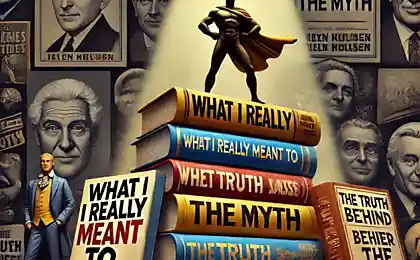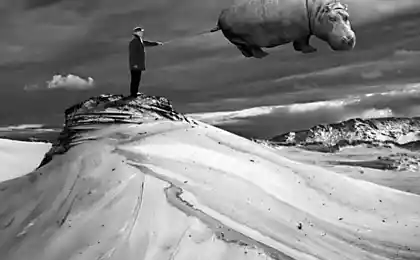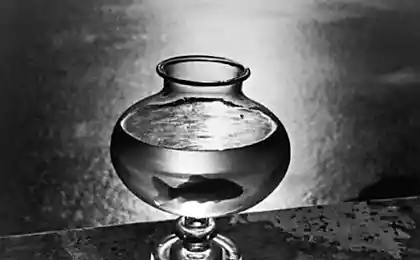1038
Here's how to actually looked historical figures!
Now, thanks to the latest scientific research and advanced computer technology can not only recreate the detailed manner of any person, and even find out about the last moments of each. Miracles and only!
Nefertiti: beauty is vremeni.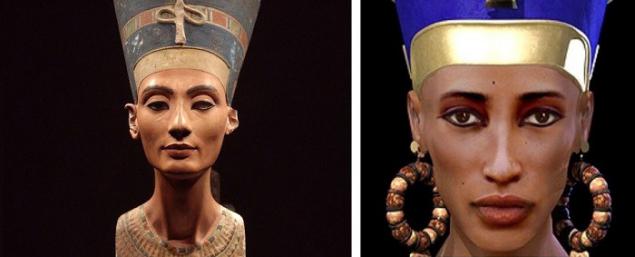
Sure, everyone is used to this image of the famous Egyptian queen. What is actually the story behind it? In 2003, the Egyptologist Joanne Fletcher had identified a mummy as the KV35YL Nefertiti - wife of the main Egyptian Pharaoh Akhenaten. In the same year he was made a computer reconstruction of its appearance.
However, after 7 years as a result of DNA research revealed that the remains do not belong to Nefertiti, and another lover, and in combination, and the sister of Akhenaten. Despite this, many scientists still agree that the remains belong to none other, as a mother of Tutankhamun - the beauty Nefertiti.
Tutankhamun: great ancestor.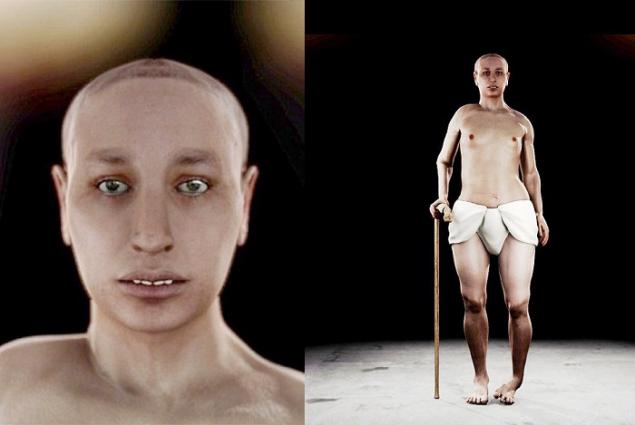
As you know, one of the most outstanding personalities of ancient Egypt was Tutankhamun. Do you know that he lived only some 19 years! Thanks to modern research it was found that the king suffered from genetic diseases, and malaria, and that might cause such a premature death of the ruler.
More recently, scientists have made another surprising discovery: More than half the men who live in Western Europe, are the direct ancestors of the Egyptian pharaoh Tutankhamun, and in particular. And all because of more than 7 thousand. Years ago there was a huge migration from North Africa, the Caucasus and the territory of present-day Europe.
Paul: Was there a man?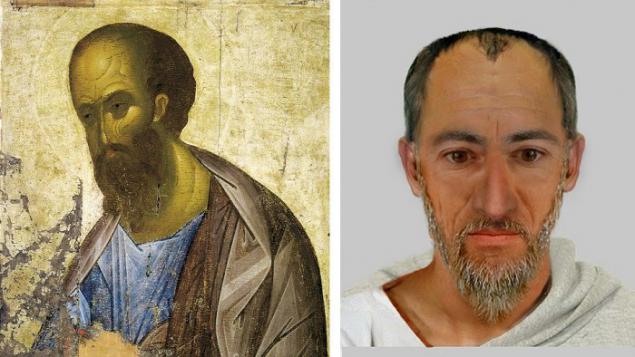
Only in 2009 for the first time in the history of scientific study was carried out of the sarcophagus, which is under the altar of the Roman Temple Basilica of Saint Paul Outside the Walls. In it it was found bone fragments that were later subjected to thorough investigation. For the truth of the experiment, the examination was carried out people who do not know the origin of the material. The result was obvious: the remains unquestionably belong to a man who lived between 1 and 2 centuries. BC Thus has been scientifically confirmed the theory that these relics belong to none other than the apostle Paul.
Richard III: the last thing King.
Not so long ago, in the autumn of 2012, the accident was made an incredible discovery: a car park in Leicester scientists found the remains of King Richard III. During the examination it was found that the brave king died right on the battlefield ... losing his helmet. Before his death, the governor received 11 wounded, nine of them had in mind. At the time of the death of the monarch he was still in armor, as evidenced by the absence of wounds on the hands. How is it that surprising that even now, centuries later, you can accurately restore the last moments of life!
Nicholas Copernicus: the star of the Middle Ages.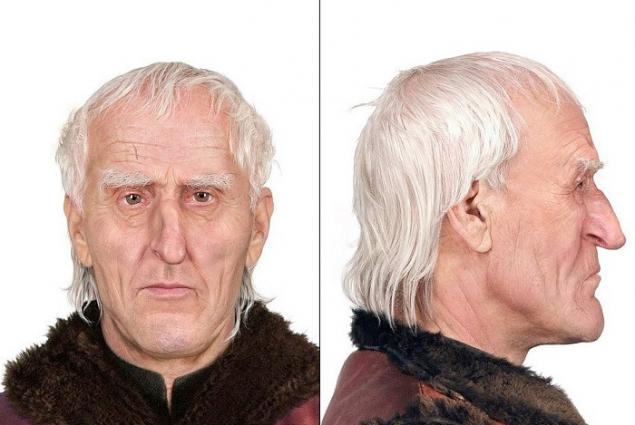
In the cathedral of Frombork (as in what is now Poland) in the recent 2005 were found the remains of the great scholar of the Middle Ages Nicolaus Copernicus. After that, the Central Forensic Science Laboratory has been established that the bones belong to the really famous astronomer. Thanks to modern technology also managed to reproduce the precise computerized facial reconstruction of Copernicus. A few years later, the International Union of Pure and Applied Chemistry have been assigned names and designations approved elements, among which one was dedicated to the great scientist - now is the 112th element of the periodic table, called Copernicus (Copernicium).
Johann Bach portraits can be trusted?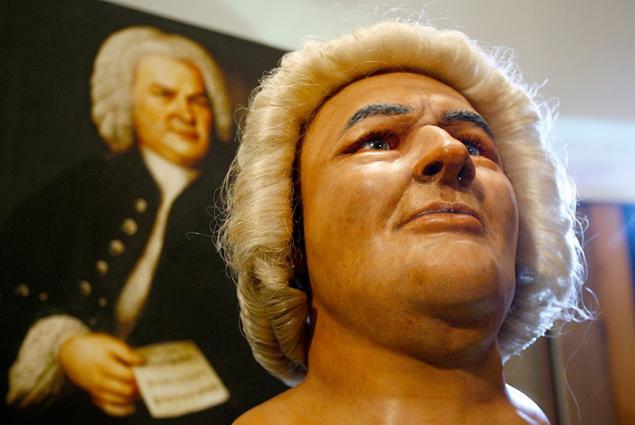
In 2008 the Scottish anthropologist Caroline Wilkinson was able to do what could not be many scientists for over a century. After many failed attempts, she was able to reconstruct the appearance of the great German composer Johann Sebastian Bach.
It should be noted that this is not the first attempt to adopt the image of a talented musician. The remains were exhumed Bach back in 1894, and already in 1908 the first sculptors tried to recreate his image. Lacking modern computer equipment, scientists have relied only on the portraits of the composer. However, the then critics were unhappy with such a project, because there is no certainty that the image is really untrue.
William
Shakespeare: the test of time. B>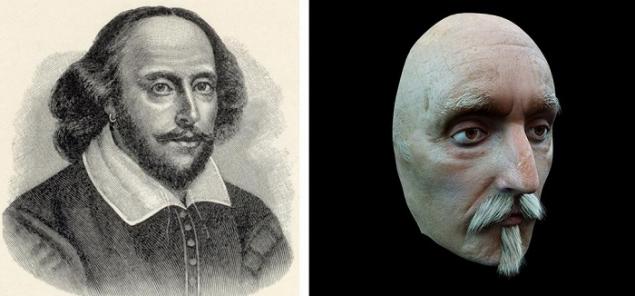
With regard to this person there are many hypotheses, theories, myths and legends, is shrouded in mystery. Reconstruction of the face of William Shakespeare made a death mask of the English poet and playwright. One theory is that all creatures, now attributed to the great writer, wrote different people in a very short time, and Shakespeare himself simply to enjoy the fruits of their creativity. Particularly vocal critics even claimed that this task can handle even ... specially trained monkey.
This dubious hypothesis was tested US programmer Jesse Anderson. He created a special "program-monkey", which managed just 30 days to print a poem by Shakespeare "Complaint in love." However, an attempt to carry out such an experiment on live monkeys failed. In 2003, the cell was placed in six monkeys connected to the computer keyboard. As a result, the monkeys typed five pages of rambling text, and a few days later broke the keyboard.
Dante: a dream or reality?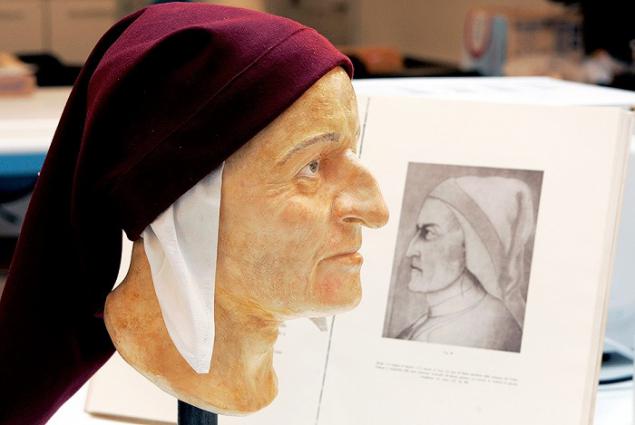
The appearance of the great Italian poet Dante Alighieri Italian scientists managed to recreate only in 2007. According to some scholars, the writer is likely to suffer bunks * olepsiey - a disease of the nervous system, which is accompanied by sudden bouts of drowsiness and sleep. But the fact still remains unconfirmed. Such "bold" conclusions are based only on the fact that in the "Divine Comedy" are reproduced with great accuracy the symptoms of the disease, and is often accompanied by her cataplexy - a sudden loss of muscle tone. So before modern researchers has the task to establish whether it is so in fact.
Henry IV: the whole thing - in the head.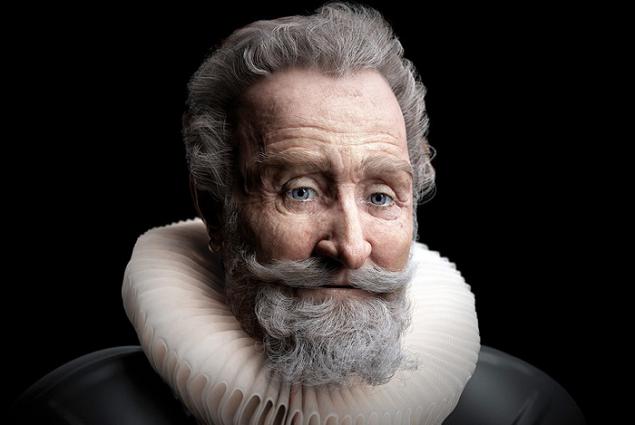
In 2010, forensic scientists, led by Philippe Charlier found that the extant mummified "head of Henry IV» is genuine. Long three-year research was conducted, and in February 2013, these same scientists are presented to the public reconstruction of the appearance of the monarch of the Bourbon dynasty. Nevertheless, a large number of geneticists are still doubts as to the authenticity of the remains of the king.
Arsinoe IV: objectionable cousin.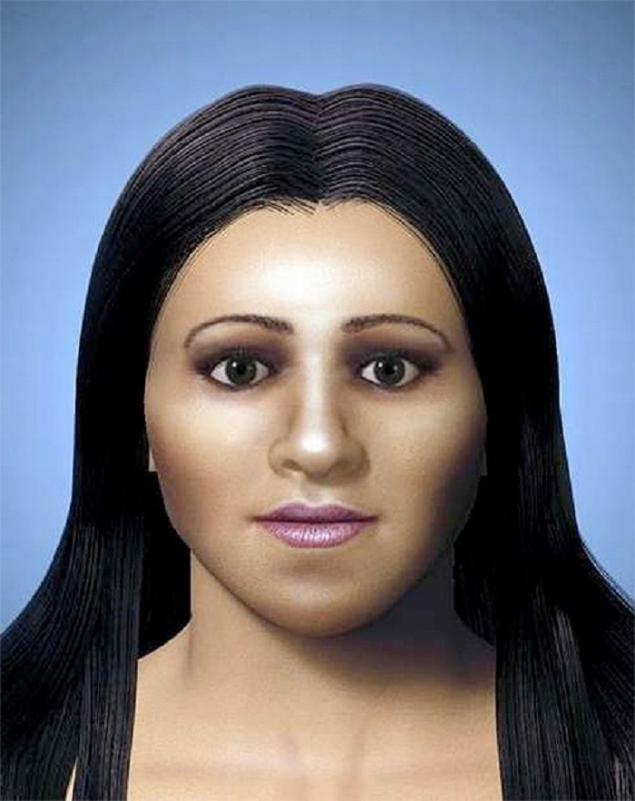
Six years ago a group of scientists has reconstructed the appearance of Arsinoe IV, younger sister, and along with the victims of Queen Cleopatra. Face beauty recreated by the standards, removed from her skull, found in the years of the Second World War.
Studies have established that killed Arsinoe in 41st BC According to the Roman historian Flavius, Cleopatra, is distinguished not only astonishing beauty, but also by extreme cruelty, I saw in stepsister threat, and therefore ordered her execution.
Saint Nicholas: good-natured and a miracle-worker.
For centuries, scientists wanted to know how really looked great miracle worker. This was due to real data obtained by the Italian professor of anatomy in 1950 during the restoration of the Basilica of St. Nicholas in Bari. Following his discovery, the scientists have managed to restore the exterior of the reconstruction of the miracle worker.
Nefertiti: beauty is vremeni.

Sure, everyone is used to this image of the famous Egyptian queen. What is actually the story behind it? In 2003, the Egyptologist Joanne Fletcher had identified a mummy as the KV35YL Nefertiti - wife of the main Egyptian Pharaoh Akhenaten. In the same year he was made a computer reconstruction of its appearance.
However, after 7 years as a result of DNA research revealed that the remains do not belong to Nefertiti, and another lover, and in combination, and the sister of Akhenaten. Despite this, many scientists still agree that the remains belong to none other, as a mother of Tutankhamun - the beauty Nefertiti.
Tutankhamun: great ancestor.

As you know, one of the most outstanding personalities of ancient Egypt was Tutankhamun. Do you know that he lived only some 19 years! Thanks to modern research it was found that the king suffered from genetic diseases, and malaria, and that might cause such a premature death of the ruler.
More recently, scientists have made another surprising discovery: More than half the men who live in Western Europe, are the direct ancestors of the Egyptian pharaoh Tutankhamun, and in particular. And all because of more than 7 thousand. Years ago there was a huge migration from North Africa, the Caucasus and the territory of present-day Europe.
Paul: Was there a man?

Only in 2009 for the first time in the history of scientific study was carried out of the sarcophagus, which is under the altar of the Roman Temple Basilica of Saint Paul Outside the Walls. In it it was found bone fragments that were later subjected to thorough investigation. For the truth of the experiment, the examination was carried out people who do not know the origin of the material. The result was obvious: the remains unquestionably belong to a man who lived between 1 and 2 centuries. BC Thus has been scientifically confirmed the theory that these relics belong to none other than the apostle Paul.
Richard III: the last thing King.

Not so long ago, in the autumn of 2012, the accident was made an incredible discovery: a car park in Leicester scientists found the remains of King Richard III. During the examination it was found that the brave king died right on the battlefield ... losing his helmet. Before his death, the governor received 11 wounded, nine of them had in mind. At the time of the death of the monarch he was still in armor, as evidenced by the absence of wounds on the hands. How is it that surprising that even now, centuries later, you can accurately restore the last moments of life!
Nicholas Copernicus: the star of the Middle Ages.

In the cathedral of Frombork (as in what is now Poland) in the recent 2005 were found the remains of the great scholar of the Middle Ages Nicolaus Copernicus. After that, the Central Forensic Science Laboratory has been established that the bones belong to the really famous astronomer. Thanks to modern technology also managed to reproduce the precise computerized facial reconstruction of Copernicus. A few years later, the International Union of Pure and Applied Chemistry have been assigned names and designations approved elements, among which one was dedicated to the great scientist - now is the 112th element of the periodic table, called Copernicus (Copernicium).
Johann Bach portraits can be trusted?

In 2008 the Scottish anthropologist Caroline Wilkinson was able to do what could not be many scientists for over a century. After many failed attempts, she was able to reconstruct the appearance of the great German composer Johann Sebastian Bach.
It should be noted that this is not the first attempt to adopt the image of a talented musician. The remains were exhumed Bach back in 1894, and already in 1908 the first sculptors tried to recreate his image. Lacking modern computer equipment, scientists have relied only on the portraits of the composer. However, the then critics were unhappy with such a project, because there is no certainty that the image is really untrue.
William
Shakespeare: the test of time. B>

With regard to this person there are many hypotheses, theories, myths and legends, is shrouded in mystery. Reconstruction of the face of William Shakespeare made a death mask of the English poet and playwright. One theory is that all creatures, now attributed to the great writer, wrote different people in a very short time, and Shakespeare himself simply to enjoy the fruits of their creativity. Particularly vocal critics even claimed that this task can handle even ... specially trained monkey.
This dubious hypothesis was tested US programmer Jesse Anderson. He created a special "program-monkey", which managed just 30 days to print a poem by Shakespeare "Complaint in love." However, an attempt to carry out such an experiment on live monkeys failed. In 2003, the cell was placed in six monkeys connected to the computer keyboard. As a result, the monkeys typed five pages of rambling text, and a few days later broke the keyboard.
Dante: a dream or reality?

The appearance of the great Italian poet Dante Alighieri Italian scientists managed to recreate only in 2007. According to some scholars, the writer is likely to suffer bunks * olepsiey - a disease of the nervous system, which is accompanied by sudden bouts of drowsiness and sleep. But the fact still remains unconfirmed. Such "bold" conclusions are based only on the fact that in the "Divine Comedy" are reproduced with great accuracy the symptoms of the disease, and is often accompanied by her cataplexy - a sudden loss of muscle tone. So before modern researchers has the task to establish whether it is so in fact.
Henry IV: the whole thing - in the head.

In 2010, forensic scientists, led by Philippe Charlier found that the extant mummified "head of Henry IV» is genuine. Long three-year research was conducted, and in February 2013, these same scientists are presented to the public reconstruction of the appearance of the monarch of the Bourbon dynasty. Nevertheless, a large number of geneticists are still doubts as to the authenticity of the remains of the king.
Arsinoe IV: objectionable cousin.

Six years ago a group of scientists has reconstructed the appearance of Arsinoe IV, younger sister, and along with the victims of Queen Cleopatra. Face beauty recreated by the standards, removed from her skull, found in the years of the Second World War.
Studies have established that killed Arsinoe in 41st BC According to the Roman historian Flavius, Cleopatra, is distinguished not only astonishing beauty, but also by extreme cruelty, I saw in stepsister threat, and therefore ordered her execution.
Saint Nicholas: good-natured and a miracle-worker.

For centuries, scientists wanted to know how really looked great miracle worker. This was due to real data obtained by the Italian professor of anatomy in 1950 during the restoration of the Basilica of St. Nicholas in Bari. Following his discovery, the scientists have managed to restore the exterior of the reconstruction of the miracle worker.
Forget about cats and dogs - found most useful pet!
This fox was struck and killed, and then the magic happened ...
